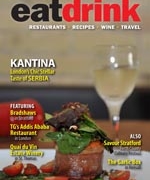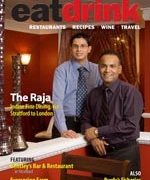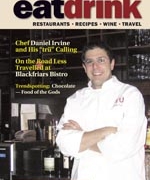The Most Important Cabbage in the World
Cabbage is a versatile vegetable responsible for several side dishes that I enjoy, like coleslaw, sauerkraut, and my favourite of all smelly foods, Korean kimchi. I have never made it myself and I didn’t even like it all that much at first, but having lived in South Korea, I have experienced it directly from the source. That was ten years ago, when I first developed a liking for it and now, being back in Canada, I miss it and crave it occasionally still. Every part of the world has trademark food items that are linked to the regional identity of locals and that outsiders learn to either love or hate. No nationality takes this as seriously as Koreans do with their kimchi. This inauspicious side dish offers more than just nourishment – it defines daily lives, family rituals, and national pride.
I first tasted Korean food only two weeks before my wife and I were due in South Korea to start careers as English teachers. Arrangements were finalized with Korean immigration and our new employer, so finding out we may not like the food of Korea would not alter our decision to go there – but it could mean a challenging twelve months for our taste buds and digestive systems. Fortunately, after some friends of Korean descent from our hometown prepared a selection of menu items, we learned right away that we loved this strange and delicious Korean food. Jennifer was particularly impressed with how tasty the food was, dispelling her fears about having to subsist on white rice alone. There are many things to adapt to in another culture, but enjoying the food is a necessary first step. The format and sequence of any meal is based on the culture that governs it and food is an enormous facet of immersion. Investigating the food choices you will see as an expat diner is advisable, if for no other reason to alleviate any anxiety over a sensitive palate. The food was very appetizing, although strange looking and, as with all things Korean, not so easy to pronounce, but I seem to be a slow learner when it comes to the Korean language.
One word that did stick with me after that first meal was kimchi. This is a word you must know before going to Korea. Kimchi is the national dish served at every meal and it can be prepared in different ways with different vegetables, but the most recognizable form is baechu – Chinese Napa cabbage pickled in brine and loaded with garlic, ginger, and red pepper paste (picture fiery red cabbage rolls minus the meat and rice). The first kimchi I tasted with my friends cleared the sinuses nicely and left my tongue in flames; that was just a sign of things to come because kimchi rarely has a mild version. Not only was that first taste of kimchi a shock to the taste buds, but it reminded me about the paradox of how foul-smelling food can actually taste good. The fetid, sweaty sock odour of kimchi will never cause anyone to say, “Mmm, something smells good in the kitchen,” but an empty bowl on the table usually results in diners asking for a refill. The pungent smell is also the reason that families may have a separate refrigerator in their home to store kimchi all by itself.
My education in Korean food continued several thousand feet over Alaska, on the plane ride from Toronto to Seoul. “Beware of the red paste in a tube,” was the warning that came from the same friends back home who knew that in-flight meals on Korean Air would be traditional fare. This paste, known as gochujang, is the same used in the preparation of kimchi and appears in every restaurant and kitchen in Korea. I started by squeezing a tiny dab of red paste into a colourful dish of vegetables and rice with the rhythmic name of bibambop. The first taste exploded across my tongue. Koreans certainly know how to fire up vegetables. I hesitantly added a bit more, knowing I needed to acclimatize my mouth to the country’s staple condiment, and the sooner the better.
Finally, my next exposure to Korean food was in the country itself. After a 14-hour flight, our first order of business was to eat – not a difficult task with restaurants on every street corner enticing passers-by with photos of Korean dishes across their front windows. We ducked into a small restaurant for a quick meal and waitresses immediately rushed to our table with a number of side dishes, containing several types of kimchi and other small appetizers. In no time at all, the table was full of food. We looked at each other quizzically, because we hadn’t even ordered anything yet. Known as banchan, this is standard practice at every Korean meal and the number of side dishes is limited only by the size of the table. To accompany our first experience with the overload of banchan, we also ordered kimbap – a mixture of rice, vegetables, and pork rolled in a sheet of seaweed. Kimbap (equivalent to Japanese maki rolls) is the stand-by Korean take-out meal which all restaurants have ready for a fast order.
Not only is travel used as a way to enjoy exotic food directly from the source, but eating also teaches about people, culture, and history. And we immediately learned that Korean society treats eating as a communal activity. Looking around, each table was covered in these small saucers, all being shared by everyone at the table. Gathering to share a meal, with kimchi as the star attraction, is a daily ritual for Koreans. I was pleased to partake in this culinary tradition and, over the next few months, every Korean who could speak English asked if I liked kimchi and if I could stand the spiciness. This was a question of national pride, since the entire country eats cold, spicy cabbage for lunch and dinner every day and, just so the first meal of the day doesn’t feel left out, it is included in breakfast as well. A Korean meal would actually be incomplete if kimchi was not present and I am sure an unwritten law requires every citizen to have a daily mandatory intake of kimchi. I tried to keep up with this daily consumption and the more kimchi I ate, the more I liked it. If they are not feeding it to you, Koreans are forever telling you about the health benefits and nutritional value of a diet embellished with kimchi. It helps you live longer, it prevents cancer, it enhances circulation, it increases metabolism, it fills you with vitamins – these are just a few of the proclamations heard daily about the miraculous qualities of kimchi.
The odd thing about kimchi at a restaurant is that you don’t have to order it. This is true at any restaurant, you won’t see it on a menu, but dishes of it just keep coming to your table. It is so ubiquitous and so engrained as part of their gastronomic culture, that any restaurant you go to will have it and it is nearly impossible to judge one better than the other because the preparation itself is also such a homogenous and traditional process there will be very little difference in its quality. There is no difference between a street food version and that at a gourmet restaurant. The same goes for any Korean domestic kitchen. And practically anywhere there is a fridge. In the school lunch room, the fridge is full of plastic kimchi containers. coexist. It may be in large plastic bags or containers (not the earthenware necessary to pickle it) because not everyone makes it at home still in this day and age. But many do. There is nothing more authentic when eating with Koreans than sharing kimchi, it is the essence of Korean cuisine, and it is plain to see that Koreans have developed a unique and genuine flavour profile distinct from other Asian cuisine.
I’ve been getting to like kimchi very much. And it’s a good thing, because not only is it literally everywhere in South Korea, but Koreans do not stop talking about it with a great deal of national pride. I was pleased to partake in this culinary tradition and, even within these first 8 days, every Korean who could speak English asked if I liked kimchi and if I could stand the spiciness. This was a question of national pride, since the whole country eats cold, spicy cabbage for lunch and dinner every day and, just so the first meal of the day doesn’t feel left out, it is also included in breakfast. A Korean meal would actually be incomplete if kimchi was not present and I am sure an unwritten law requires every citizen to have a daily mandatory intake of kimchi. I tried to keep up with this daily consumption and the more kimchi I ate, the more I liked it. If they are not feeding it to you, Koreans are forever telling you about the health benefits and nutritional value of a diet embellished with kimchi. It helps you live longer, it prevents cancer, it fills you with essential vitamins – these are just a few of the proclamations heard daily about the miraculous qualities of kimchi.
The practice of making kimchi is also rooted in tradition. Customarily, the time spent making kimchi is a family-oriented process known as kimjang; it is a rite of passage for the women of the household to be involved in kimchi preparation. The cabbage is preserved in brine, packed in earthenware crocks, and buried in the ground for several months. It is then meant to nourish a family through winter. The long-standing practice of making kimchi in the autumn months still exists today, although there are just as many kimchi-laden plastic containers and glass jars at grocery stores to supplement the family stock throughout the year.
In his book, Cooked: A Natural History of Transformation, food advocate Michael Pollan, describes the process of fermenting food as a curious form of cooking. He writes: “What’s curious is how culturally specific so many of the flavours of fermentation turn out to be. Unlike sweetness or umami, these are not the kind of simple flavours humans are hardwired to like. To the contrary, these are ‘acquired tastes,’ by which we mean that to enjoy them we often must overcome a hardwired aversion, something it usually takes the force of culture, and probably repeated exposure as a child, to achieve. The most common term children and adults alike will use to describe the fermented foods of another culture is some variation of the word ‘rotten.’ A wrinkle of the nose is how we react to both rottenness and foreignness. Many of these foods occupy a biological frontier – on the edge of decomposition – that turns out to be a well-patrolled cultural frontier as well” (309). Kimchi is a sort of cultural rotten emblem of its country.
Breaking from the traditional rustic methods of kimchi preparation, recent experiments have created a technologically-advanced version of Korea’s favourite food that can withstand space travel. Just as I had indulged in kimchi on my flight to Korea, so too was the first Korean astronaut at the International Space Station in the Russian-sponsored 2008 trip expected to eat it high in the sky. Due to the fermentation involved in its preparation, space kimchi was challenging to make, but it now exists in tin cans and freeze-dried packages so that kimchi can go to outer space. Koreans seem more proud of the space travel of kimchi than the actual Korean astronaut that took it with him.
Not only is it eaten religiously, prepared with great care, and talked about obsessively, but there is also a museum dedicated to it – that’s right, a museum for cabbage. Incongruously nestled within the hallways of the COEX Mall in the Gangnam-gu division of Seoul, where consumerism rages in full force with fast food chains, movie theatres, coffee shops, and clothing outlets, the quaint Kimchi Field Museum teaches you everything there is to know about this national food, in case you were unaware there is so much to learn about cabbage. There are, in fact, over 200 types of kimchi used in a variety of cultural occasions and it is not strictly made with cabbage, but can include different vegetables, such as radishes, cucumbers, bean sprouts, and soy beans. These are often known as summer kimchi because they use less spice and it is pickled for a lot less time; doesn’t have the extensive pickling time as baechu which is meant to be more of a winter-long source of nourishment. There is also a kimchi festival held each year to celebrate the national food in Gwangju, the area which reportedly produces the best kimchi in the country.
Since kimchi is the heart and soul of Korean cuisine, the red pepper paste and flakes used in its preparation are big business in Korea. There are thin red peppers drying everywhere outside: on sidewalks, in parking lots, on apartment balconies, on highway medians. They are in the middle of public parks or outside the doorstep of your local convenience store. There seems to be no rhyme nor reason to the business, it’s for anyone who has the urge to dry out peppers to keep the country’s supply of hot paste alive. Just another example of the collective approach to Korean cuisine – you may never see anyone laying them out, but they are always there in odd locations, drying in the sun, at risk of being stepped on by pedestrians at any time.
Not only is kimchi celebrated with its own museum and festival, but the word itself has earned an honorary role in Korean vocabulary. One day, the group of eight boys and girls in my kindergarten class were lined up in a neat row for a class photo. I had my digital camera with me and all Korean students love to be the target of a photo shoot, even the extremely shy ones never turn away from the camera. I was just about to instruct the students to say “cheese” when my Korean teaching partner beat me to it with a word I wasn’t expecting. “Kimchi,” she shouted, forcing a big grin as she drew out the eeeee sound at the end of the word. She then stuck the tips of her index fingers into her chubby cheeks near the corners of her mouth and twisted them, encouraging the students to produce smiles. They all repeated “kimchi” in unison. Smiles all around. This word is the equivalent of “cheese” for the standard “get-you-to-smile” disclaimer of photographers. That is how serious Koreans are about kimchi; rooted in national and family traditions, it is taken far more seriously than any other cabbage in history.











